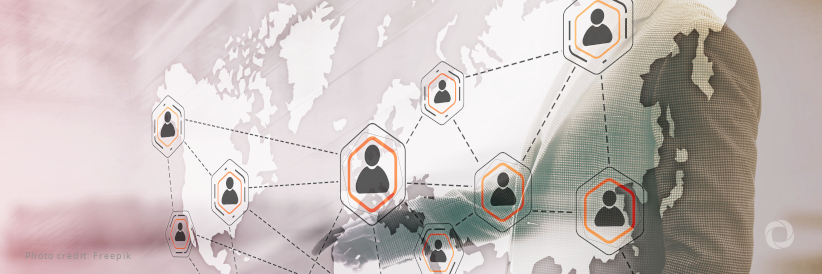International non-governmental organizations (INGOs) are complex entities that work in challenging environments, often involving different cultures, languages, and socio-economic realities. Despite their noble intentions, INGOs sometimes struggle to maintain communication and work culture between their different offices, which can create frustration and negative impacts on the organization’s overall operations. To address these challenges, INGOs can leverage the benefits of diversity at the regional office and headquarters (HQ) levels.
Diversity is a key driver of innovation and problem-solving. By embracing diversity, INGOs can create a more inclusive environment that fosters open communication, mutual respect, and trust between different levels of the organization. One of the key benefits of diversity is bridging communication gaps. When individuals from different backgrounds and cultures work together, they bring unique communication styles and approaches to the table. By embracing and respecting these differences, INGOs can create a communication framework that caters to different communication styles, thus reducing frustration and misunderstandings.
Diversity can also improve work culture by creating a sense of belonging and inclusion. When individuals feel valued and respected for who they are, they are more likely to be engaged and motivated. This can lead to better teamwork, collaboration, and ultimately, more effective operations. Moreover, a diverse workforce can enhance creativity, innovation, and problem-solving by providing different perspectives, experiences, and approaches. By creating a work environment that values and respects diversity, INGOs can unlock the full potential of their employees and improve their overall effectiveness.
Diversity at the regional and HQ levels can have a positive impact on INGOs’ overall performance. By embracing diversity, INGOs can enhance their reputation as an inclusive and progressive organization. This can attract new talent and donors, improve stakeholder relationships, and create a positive impact on the communities they serve. Moreover, diversity can help INGOs adapt to the changing needs of the communities they serve by providing new insights and perspectives that can inform their programs and operations.
A diverse workforce can help the organization better understand and connect with the communities it serves. By having employees from different backgrounds, cultures, and languages, INGOs can develop a deeper appreciation of the unique challenges and opportunities that exist in different parts of the world. This can help the organization develop more effective and culturally appropriate programs that resonate with the local communities.
Moreover, a diverse workforce can help INGOs build stronger partnerships and collaborations with local organizations, governments, and other stakeholders. When the INGO has employees who can speak the local language or have a deep understanding of the local culture, they can build trust and rapport with these stakeholders more easily. This can lead to more fruitful partnerships and collaborations that ultimately benefit the communities they serve.
Furthermore, a diverse workforce can help INGOs navigate complex political and social dynamics that exist in different regions. By having employees with different backgrounds and experiences, the organization can gain a more nuanced understanding of the power structures and social dynamics that exist in different parts of the world. This can help the INGO develop more effective advocacy strategies and policy recommendations that are grounded in a deep understanding of the local context.
Another benefit of diversity at the regional and HQ levels is the potential to attract new donors and supporters. By demonstrating a commitment to diversity, INGOs can differentiate themselves from other organizations and appeal to a wider range of donors and supporters who value inclusivity and social justice.
Finally, a diverse workforce at the regional and HQ levels can help INGOs demonstrate their commitment to diversity and inclusion more broadly. By having a diverse workforce in leadership positions, INGOs can lead by example and inspire other organizations to prioritize diversity and inclusion in their own operations. This can create a ripple effect that ultimately contributes to a more equitable and just global society.
To foster diversity within their organizations, INGOs can take several actionable steps. Firstly, they can prioritize recruiting a diverse range of candidates for all positions, including leadership roles. This can be done by expanding the candidate pool to include historically marginalized communities, offering internships or mentorship programs, and creating partnerships with organizations that specialize in diversity recruitment. Secondly, INGOs can create a welcoming and inclusive work environment by providing cultural competency training to all employees, encouraging open communication and feedback, and creating opportunities for employees to celebrate their diverse backgrounds. Finally, INGOs can prioritize diversity in decision-making processes by including diverse perspectives and experiences at all levels of the organization. This can be achieved by establishing diversity quotas for boards and leadership teams, creating employee resource groups, and soliciting feedback from employees on how to create a more inclusive workplace.
The benefits of diversity at regional offices and HQ are numerous, with potential positive impacts on communication, work culture, and overall performance of INGOs. By embracing differences in ideas, perspectives, and experiences, INGOs can unlock the power of diversity to connect more effectively with communities and create lasting impact worldwide. While the benefits discussed in this article are significant, they are by no means exhaustive, and there are many other ways that diversity can contribute to the success of INGOs. Therefore, it is important for INGOs to recognize the value of diversity and prioritize efforts to foster inclusivity and equity within their organizations.
While some employees may roll their eyes at yet another diversity or communication training, I, for one, can’t help but do a happy dance when I see my organization embrace differences and prioritize inclusivity.

